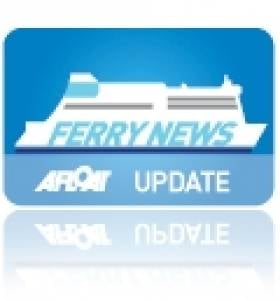Displaying items by tag: IrelandFranceSpain ferry
LD Lines to Cease Ireland-France-Spain Services
#IrelandSpainFerry – Ireland's first historic ro-ro ferry connection to Spain via a France 'landbridge' service launched in January by LD Lines as previously reported, is to cease operations with the final sailing departing Rosslare this Friday, writes Jehan Ashmore.
In a statement released to Afloat.ie, "LD Lines can confirm that we will be withdrawing our Rosslare - St.Nazaire - Gijon services after the 29 August sailing from Rosslare. Bookings had only ever been taken until 5 September and sailings for the final week of sailings were suspended as long as March whenever the decision was taken only to operate the service for the peak summer season.
The company spokesperson added, "Any passengers booked on the last two sailings have been transferred to the Rosslare - Cherbourg route. Only a very small number of passengers were affected by this decision." For ferry sailing information click HERE.
Norman Atlantic, (ex. Scintu See Photo) a 26,904 tonnes ro-pax ferry, is due to make her final inbound sailing to Rosslare tomorrow (28 August) and remain overnight in the Wexford port.
As referred above, her final outbound sailing from Rosslare on Friday (29 August) departs at 21.00 to St. Nazaire. The 22 hour crossing is scheduled to arrive at 19.00 the following day in the south Breton port downriver from Nantes along the Loire estuary.
LD Lines 'Motorways of the Sea' route allowed for a stopover en route in mid-west France before completing the journey to Spain at the port in the northern region of Asturias. Passengers had the added option of visiting resorts in western France and throughout Spain.
The French operator's core market was to capture the Irish-Iberian freight trade by offering a more cost effective and environment friendly alternative. A notable benefit particular to freight drivers was avoiding longer distances across France and EU haulage directives.
Norman Atlantic's 550 passenger ferry is of the popular Italian Visentini built ro-pax design. She can accommodate 110 freight vehicles or 150 trailers along with 200 tourist cars. As also reported, she had been previously off-service for three-months for dry-docking and other duties until she resumed the Irish route in June.
























































